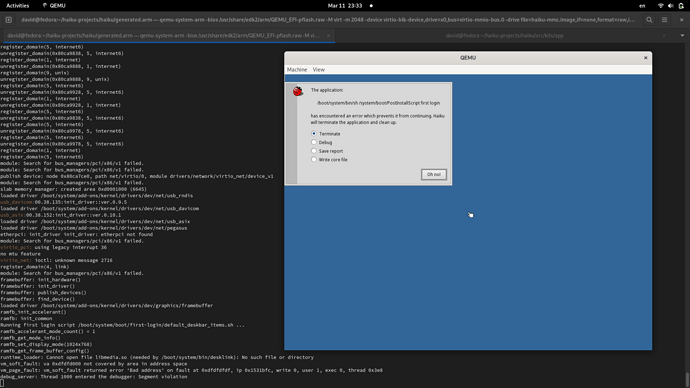some small steps with the ARM port:
- there’s no deadlock, no race condition, the lockup is caused by lack of accessed/modified bit handling in MMU. Current paging method reported all pages as dirty which causes trouble. If I modify it to report that no pages are dirty, we are able to progress further in the bootup. Of course we’ll need a proper accessed/modified flag implementation.
- alignment issue in BMessage::FindInt64
- we need to implement fork, signals, restart syscalls
